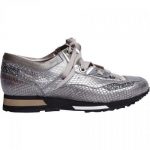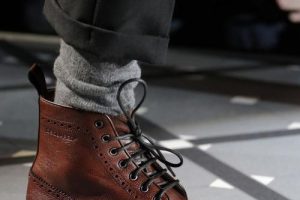Shoes are not just functional items for protecting our feet; they also play a significant role in reflecting the cultural, historical, and social aspects of different regions and countries. This extensive article explores traditional shoe styles from around the world, delving into the rich tapestry of cultures and their unique footwear.
Introduction
Shoes have been an integral part of human civilization for thousands of years. The evolution of shoe styles is closely intertwined with the history, climate, customs, and craftsmanship of various regions. Traditional shoes not only serve as practical attire but also represent a form of artistic expression. They reflect the identity, beliefs, and values of the people who wear them.
Asia
Japan: Geta
In Japan, traditional wooden sandals known as “geta” have been worn for centuries. Geta are elevated shoes with a distinctive “clacking” sound when the wearer walks. These shoes have a wooden base and are usually made from zelkova or paulownia wood. The height of the geta’s platform varies based on occasions and formality, with taller geta often reserved for formal events.
Geta are still worn in Japan, especially during traditional festivals like the Gion Matsuri in Kyoto. They are typically paired with a kimono, showcasing the perfect blend of tradition and fashion.
India: Juttis and Kolhapuris
India boasts a wide array of traditional footwear styles, reflecting the country’s diverse culture and climate. Juttis are intricately embroidered, pointed-toe shoes, often made from leather or silk. They are popular in North India and are an essential part of traditional Indian attire.
Kolhapuris, on the other hand, are open-toe sandals originating from the city of Kolhapur in Maharashtra. These sandals are made from vegetable-tanned leather and are known for their durability and comfort. Kolhapuris are now embraced worldwide as a fashionable and comfortable choice for both casual and formal wear.
China: Lotus Shoes
While no longer in common use, lotus shoes are a notable part of Chinese history. These small, ornate shoes were designed for bound feet, a practice that was once considered a symbol of beauty and social status in China. Lotus shoes were typically made from silk and embroidered with intricate designs. They were worn by women with bound feet, a tradition that has faded into history.
Africa
Morocco: Babouche
The babouche is a traditional slipper-style shoe from Morocco, often crafted from soft leather. These shoes are known for their pointed toes, and the ends can be curled up or down. Babouches are worn by both men and women and are a common choice for indoor and casual outdoor wear.
Babouches have gained popularity beyond Morocco, becoming a trendy and comfortable choice for modern footwear, with various international designers incorporating their style into collections.
Ethiopia: Huaraches
Ethiopia’s traditional footwear, known as “huaraches,” is a unique type of sandal. These shoes are made from woven leather strips or other materials and are known for their breathability, making them well-suited for the country’s hot climate. Huaraches are an essential part of Ethiopian culture and are often worn during traditional ceremonies.
Middle East
Turkey: Yemeni
Yemeni shoes, also known as “Yemeni boots” or “Yemeni slipper,” are traditional Turkish footwear. They are made from natural materials such as cotton and leather, with distinctive red or black patterns. These shoes are not only comfortable but also have historical significance in Turkey.
Yemeni shoes are known for their versatility, worn casually and in formal settings, making them a symbol of Turkish heritage.
Iran: Galesh
In Iran, the galesh is a traditional shoe made from natural materials, typically felt or animal skin. These shoes are well-suited for the country’s climate and terrain. Galesh shoes come in various styles, including ankle-high and knee-high versions.
Europe
Spain: Espadrilles
Espadrilles are a classic footwear style originating from Spain. These casual shoes are made from canvas or cotton fabric, with distinctive rope soles. Espadrilles are comfortable, lightweight, and perfect for warm weather. They are popular throughout the Mediterranean and have become a staple of summer fashion in many countries.
Netherlands: Wooden Clogs
The traditional Dutch wooden clog, or “klomp,” is a symbol of Dutch heritage. These sturdy shoes are made from a single piece of wood, typically willow or poplar. Wooden clogs have been worn by Dutch farmers for centuries and are known for their durability and functionality.
North America
Native American Moccasins
Moccasins are traditional footwear worn by Native American tribes across North America. They are made from various materials, including leather and suede, and are characterized by their soft sole and simple design. Moccasins are not only practical but also significant cultural symbols for Native American communities.
Mexican Huaraches
Huaraches in Mexico are distinct from the Ethiopian huaraches mentioned earlier. Mexican huaraches are open-toe sandals with woven leather or fabric strips forming the upper part. These sandals are comfortable and have a long history in Mexican culture, often associated with artisan craftsmanship.
South America
Argentina: Alpargatas
Alpargatas, or espadrilles, are traditional shoes in Argentina, particularly popular in rural areas. These shoes are made from canvas or fabric with a jute sole, making them comfortable and suitable for warm weather. Alpargatas are a part of the gaucho culture and are known for their durability.
Oceania
Australia: Ugg Boots
Ugg boots, or “uggs,” are iconic Australian footwear. These boots are made from sheepskin and are known for their warmth and comfort. Ugg boots have gained global popularity and have become a fashion statement in many countries.
Conclusion
Traditional shoe styles from different countries and regions offer a glimpse into the diverse cultures and histories that shape our world. These shoes not only serve as functional attire but also as symbols of heritage, craftsmanship, and identity. As fashion continues to evolve, many traditional footwear styles are finding their place in contemporary fashion, bridging the gap between the past and the present. The world of shoes and culture is a testament to the enduring connection between fashion and society.
















Add Comment